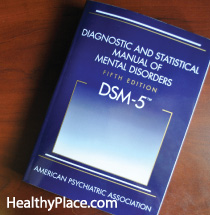Are There Symptoms of PTSD Missing from the DSM-5?
There are four symptom types of posttraumatic stress disorder (PTSD) listed in the Diagnostic and Statistical Manual of Mental Disorders (DSM) but are the symptoms of PTSD missing from the fifth edition of the DSM (DSM-5)? Two 2015 studies seem to think so. One study calls for a seven symptom-type model while another calls for a six symptom-type model. Both studies indicated these models were more valid than the current four symptom-type model. So are there symptoms of PTSD missing from the DSM-5?
Current Recognized Symptoms of PTSD in the DSM-5
As I’ve written about before, there are four types of symptoms recognized in the DSM-5. They are:
- Re-experiencing – including things like flashbacks
- Avoidance – including things like avoiding reminders of the trauma(s)
- Negative changes in beliefs and feelings – including negative thoughts about self-image and those around you
- Hyperarousal – feeling “keyed up” or on edge
However, some feel that these symptom types don’t fully capture everything a person with PTSD (including combat PTSD) may experience.
Other Symptom Types for PTSD
 The two studies Dimensional Structure of DSM-5 Posttraumatic Stress Symptoms: Support for a Hybrid Anhedonia and Externalizing Behaviors Model and Dimensional Structure of DSM-5 Posttraumatic Stress Disorder Symptoms: Results from the National Health and Resilience in Veterans Study suggest symptoms types more like:
The two studies Dimensional Structure of DSM-5 Posttraumatic Stress Symptoms: Support for a Hybrid Anhedonia and Externalizing Behaviors Model and Dimensional Structure of DSM-5 Posttraumatic Stress Disorder Symptoms: Results from the National Health and Resilience in Veterans Study suggest symptoms types more like:
- Re-experiencing – as currently defined
- Avoidance – as currently defined
- Negative affect – currently taken into account in the negative thoughts and feelings symptom type
- Anhedonia – an inability to experience pleasure; loss of interest; detachment
- Externalizing behaviors – characterized by self-destructive/reckless behaviors (found to be related to hostility)
- Anxious arousal – experiences of anxiety
- Dysphoric arousal – difficult and uneasy or dissatisfactory experiences
- Emotional numbing – associated with co-occurring depression (common in those with PTSD)
What Do More Symptoms for PTSD Mean?
The idea with recognizing more PTSD symptoms isn’t about suggesting that people with PTSD are sicker or about diagnosing more people with PTSD. What it is, is an attempt to better represent, diagnostically, what the disorder truly is and what people with PTSD go through.
I don’t know whether future versions of the DSM will take these additional symptom clusters into account, but what I think is important is trying to capture the full experience of PTSD for people so that we can most accurately diagnose and treat PTSD. If we do not fully recognize a symptom, it’s unlikely that treatments will be developed to deal with it.
Additionally, when a symptom is not recognized, people may feel their experiences are invalidated, so recognizing a symptom, officially, allows people to more fully understand their own experiences and what affects PTSD may be having on their lives. Many people experience PTSD differently and, if possible, diagnostic criteria should try to reflect that.
You can also connect with Dr. Harry Croft on his website, Google+, Facebook, and Linkedin.
APA Reference
Croft, H.
(2015, July 10). Are There Symptoms of PTSD Missing from the DSM-5?, HealthyPlace. Retrieved
on 2025, November 25 from https://www.healthyplace.com/blogs/understandingcombatptsd/2015/07/are-there-symptoms-of-ptsd-missing-from-the-dsm-5
Author: Harry Croft, M.D.
I have been diagnosed with post traumatic stress. Evidently, I have been like this for many years. My mother suffered several times with serious anxiety. She had her 2nd breakdown when I was 5 years old.
I have found one of the main symptoms of post traumatic stress is irritability. I become angry & frustrated very quickly. I have been this way for many years.
Also: insomnia, hypersensitive to noise (mute t.v.), crying, feeling nauseated, headaches, & many more symptoms.
